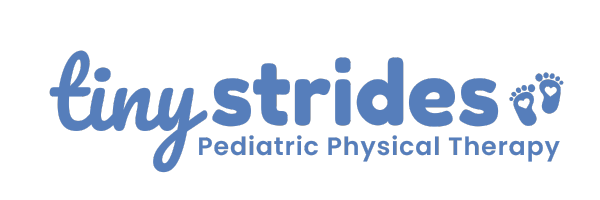Fit4Mom West Side
Blog Post- May 2025
Strong Strides Require a Strong Core: Why Your Baby (and Toddler!) Needs Core Strength Too
Dr. Meridith Jochum Rodriguez, PT, DPT
Pediatric Doctor of Physical Therapy and Owner of Tiny Strides Pediatric Physical Therapy
As part of the Fit4Mom community, you know how important core strength is for your workouts, balance, posture, and powering through daily mom-life. But what many don’t realize is that your little one also depends on their core—not just as a baby learning to roll and sit, but as a toddler learning to run, climb, and jump.
As a pediatric physical therapist, I am here to help highlight why a strong core is just as essential for your child as it is for you—and how you can support their gross motor development through play.
Why Core Strength Matters for Little Ones
Your child’s core includes the muscles of the stomach, back, and hips—the center of all movement. A strong core provides the stability they need for:
• Rolling and crawling
• Sitting and standing
• Walking and running
• Climbing stairs
• Jumping, hopping, and balancing
• Learning to swim and ride a bike
Without a strong and coordinated core, toddlers may have more difficulty meeting milestones, may appear clumsy, fall often, or avoid physically demanding play altogether. You may also notice they prefer sitting in a “w-sit” position or stand with their bellies forward. When your child’s core is strong, play and exploration of their environment becomes easier and more fun!
How Core Strength Grows: From Baby Rolls to Toddler Jumps
In Infancy:
• Tummy Time builds strength in the neck, shoulders, and core.
• Rolling and Sitting activates the core muscles needed for balance and
coordination.
• Crawling strengthens the entire trunk while promoting brain development such
as bilateral coordination and spatial awareness.
In Toddlerhood:
• Climbing playground steps or everyday obstacles such as couch cushions helps build core and hip strength, as well as improves coordination.
• Jumping requires controlled power from the core to lift off and land safely.
• Running and navigating uneven ground builds endurance and balance.
• Stair Climbing demands strong abdominal and lower back muscles to alternate
feet and maintain stability.
• Core strength is necessary in order to sit and engage with fine-motor activities in an effective position.
Core-Boosting Play for Babies and Toddlers (Post-Workout Friendly!)
Here are a few activities you can do together to build your child’s core while keeping things fun:
For Babies:
• Tummy Time Variations: Use a rolled towel, TumTum Wedge, or your chest to
give different sensory input and levels of challenge. Ultimately, you want to
progress to completing the majority of tummy time flat on the floor by 3 months of age.
• Side Lying Play: Position your baby on their side with toys placed in front of
them. This position strengthens the obliques and encourages rolling.
• Supported Sitting and Reaching: Position your baby (once they are able to keep
their head in the middle on their own) in a supported sitting. This encourages
balance and core strengthening. When your baby is able to sit independently,
you can begin working on helping them reach for toys to further strengthen
muscles and encourage trunk rotation.
For Toddlers:
• Obstacle Courses: Use pillows, stools, and tunnels to encourage crawling,
climbing, and crawling under or over.
• Animal Walks: Bear walk, crab walk, or frog jump—these are great for
coordination and core strength.
• Jump Games: Use painter’s tape lines for toddlers to jump over, or hop like a
bunny from one “lily pad” to the next.
• Stair Climbing Practice: Help your little one practice stepping up and down at
steps or stools of varying heights. Make sure they are able to alternate between
leading with their right and left foot.
• Find a New Playground: Enjoy helping your toddler explore the different ramps,
rock walls, swings, and balance beams! It is such a fun way to build strength and
coordination.
Signs of Core Weakness to Watch For
While every child develops at their own pace, here are a few red flags that might suggest weak core strength:
• Difficulty with sitting still or staying upright without slumping
• Frequent falling when running or climbing
• Avoiding or becoming frustrated with physical play (like stairs or jumping)
• Delays in major motor milestones like walking or jumping
• W-sitting or leaning heavily on hands during play
If you notice any of these signs, a pediatric physical therapist can help assess your child’s strength and motor skills, and give you personalized strategies to support them.
At Tiny Strides Pediatric Physical Therapy, I offer in-home pediatric PT services throughout Greater Cleveland for children from birth to three years old. My mission is to help support little ones and their families through play-based physical therapy. Find me at tinystridespt.com or feel free to reach out to me directly at meridith@herstridephysicaltherapy.com or 440-382-3505.
You’re doing fantastic mama!
Your workouts are helping you build core strength—but they’re also setting an amazing example for your child. You are showing them that movement and exercise is such an important, joyful part of life. You are laying the foundation for a strong, confident, happy mover!
Because strong moms raise strong kids—starting from the core.

